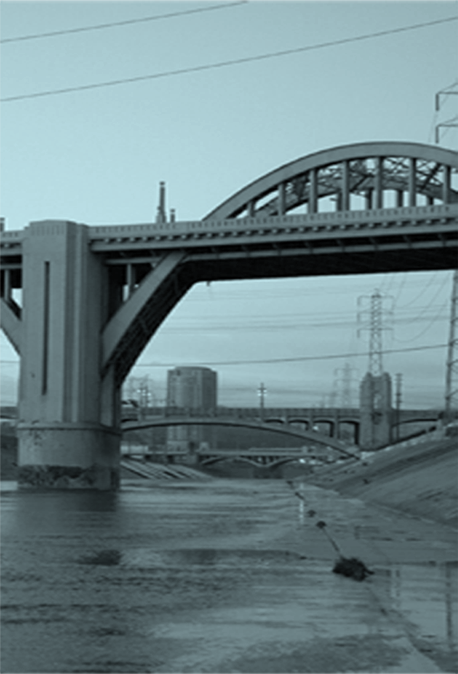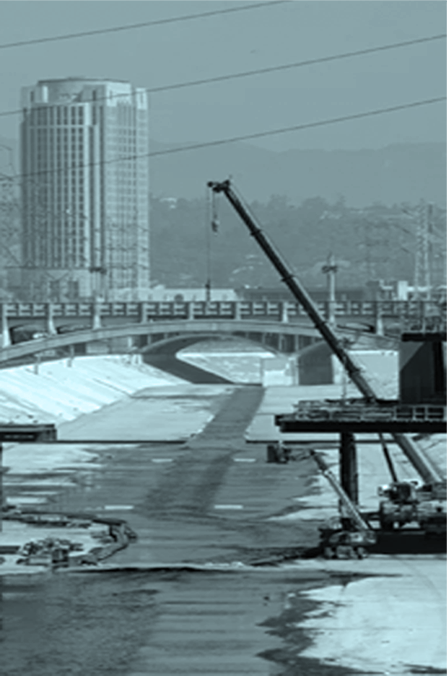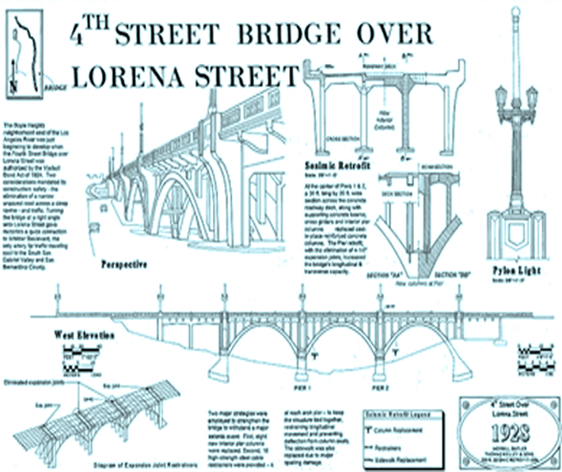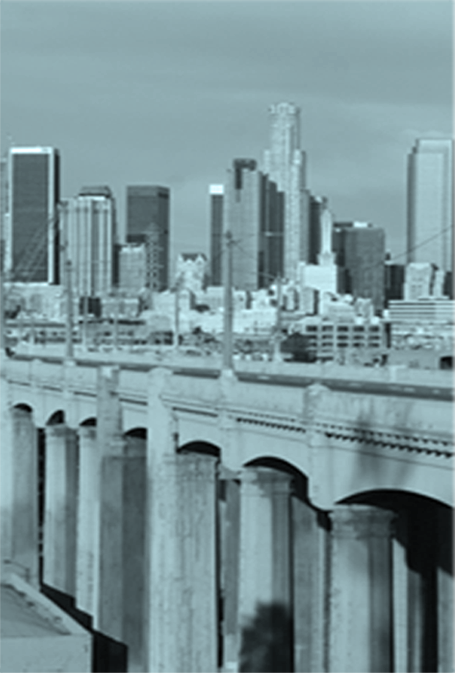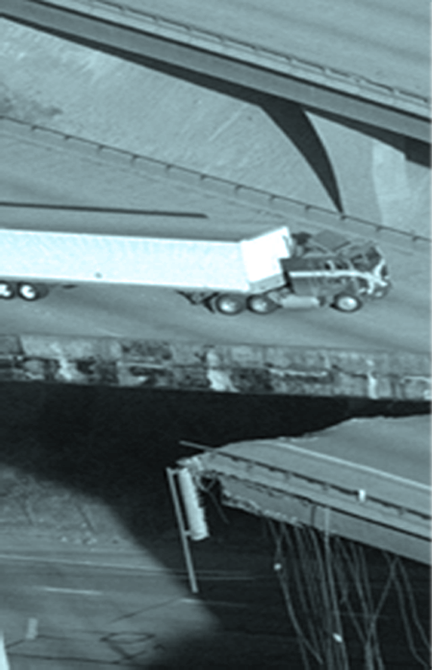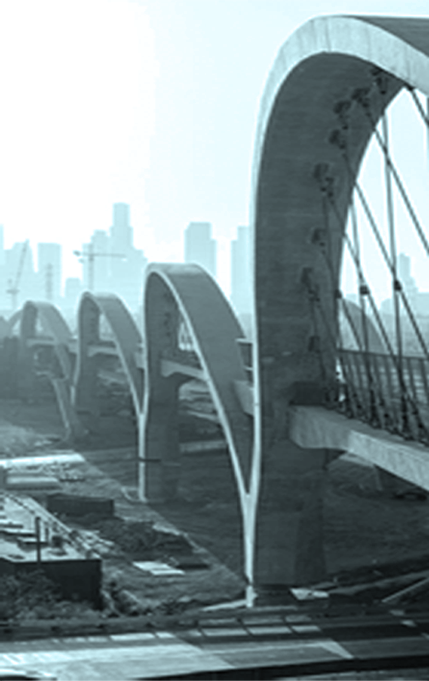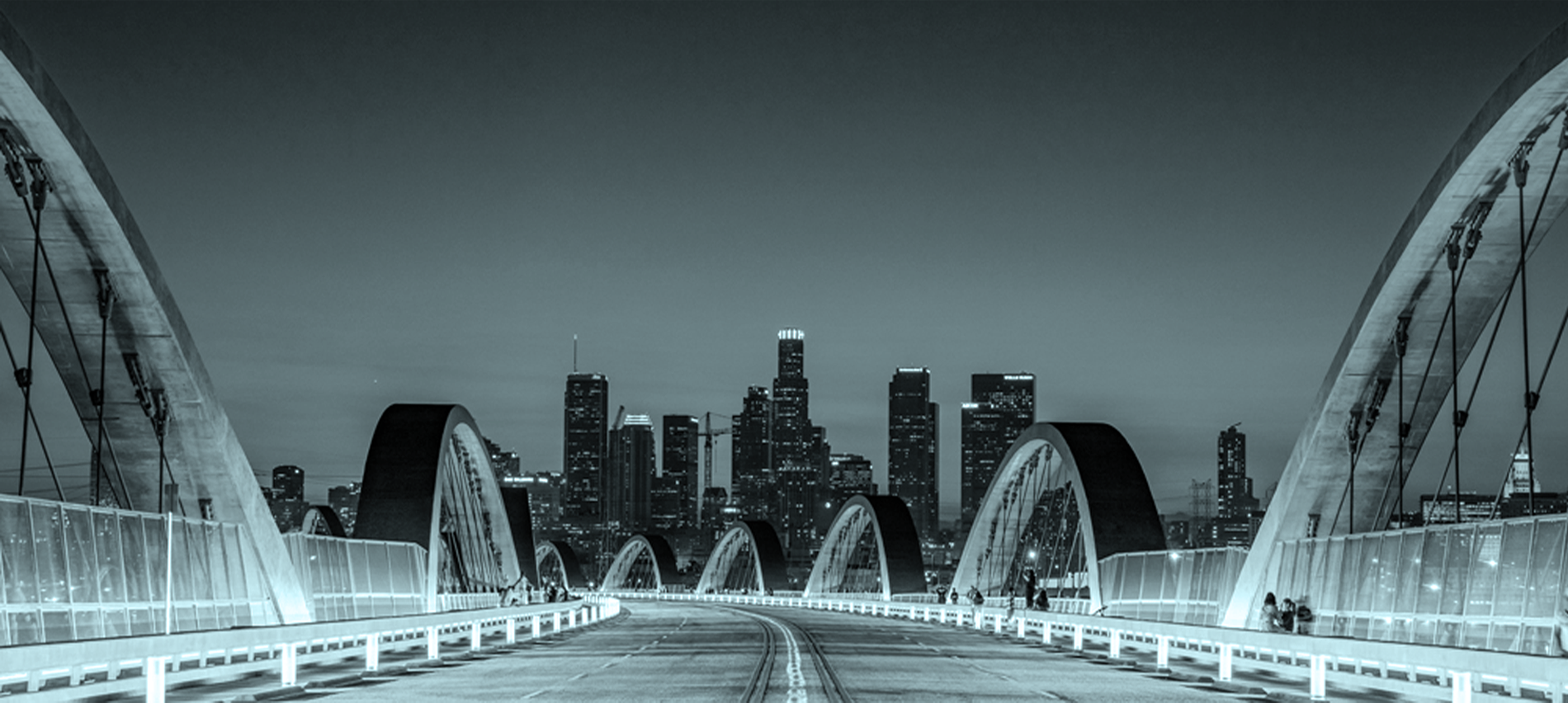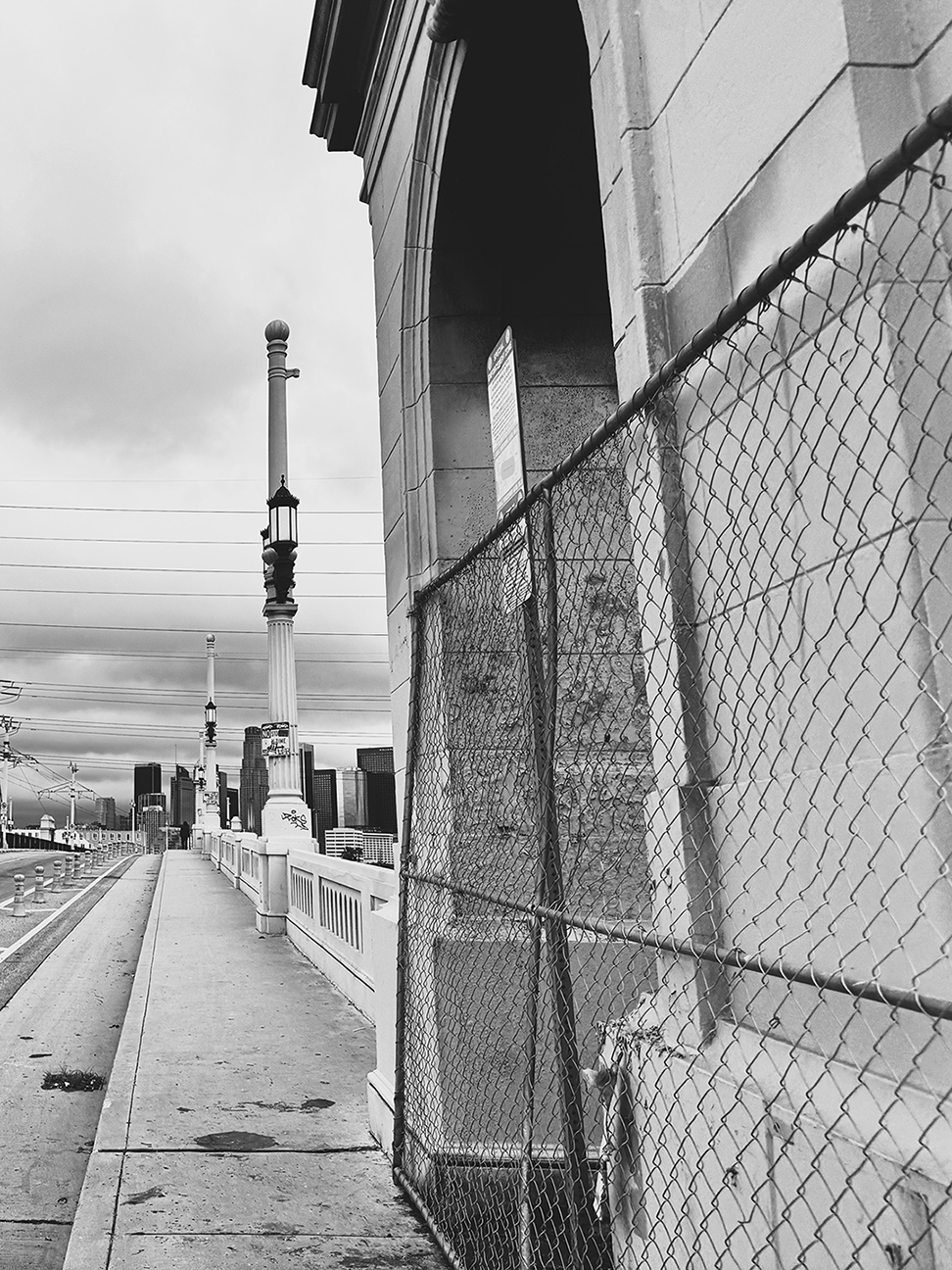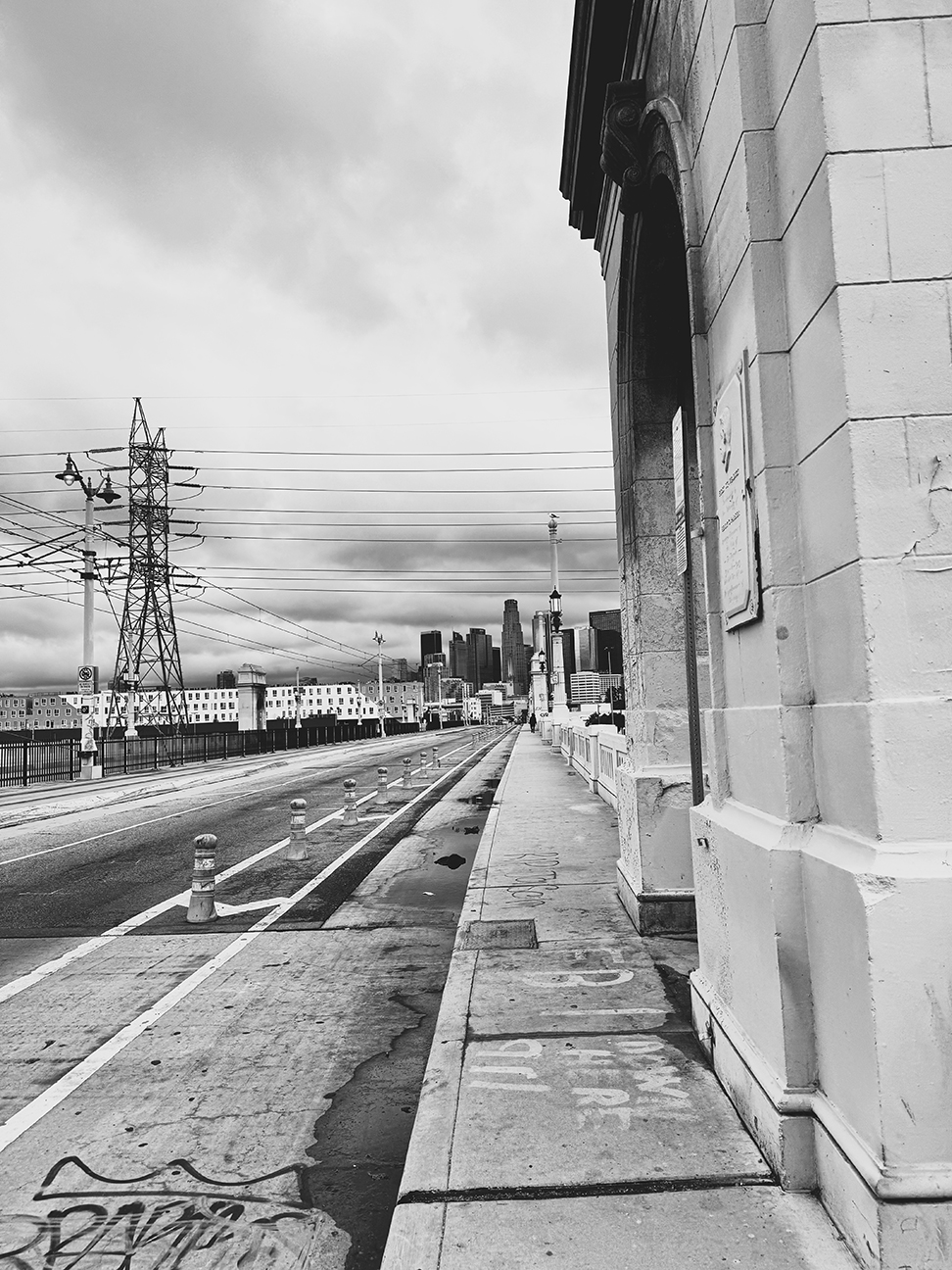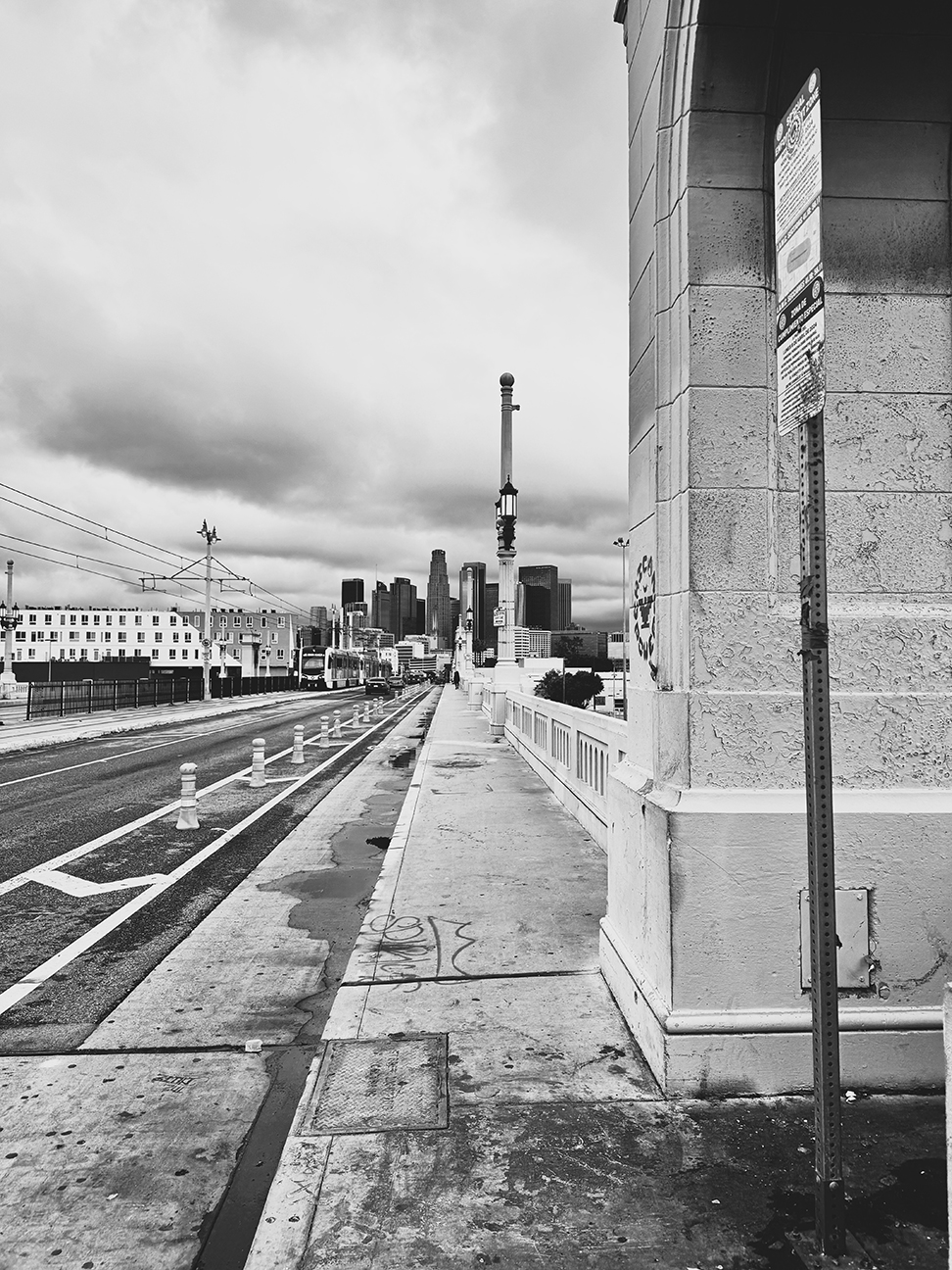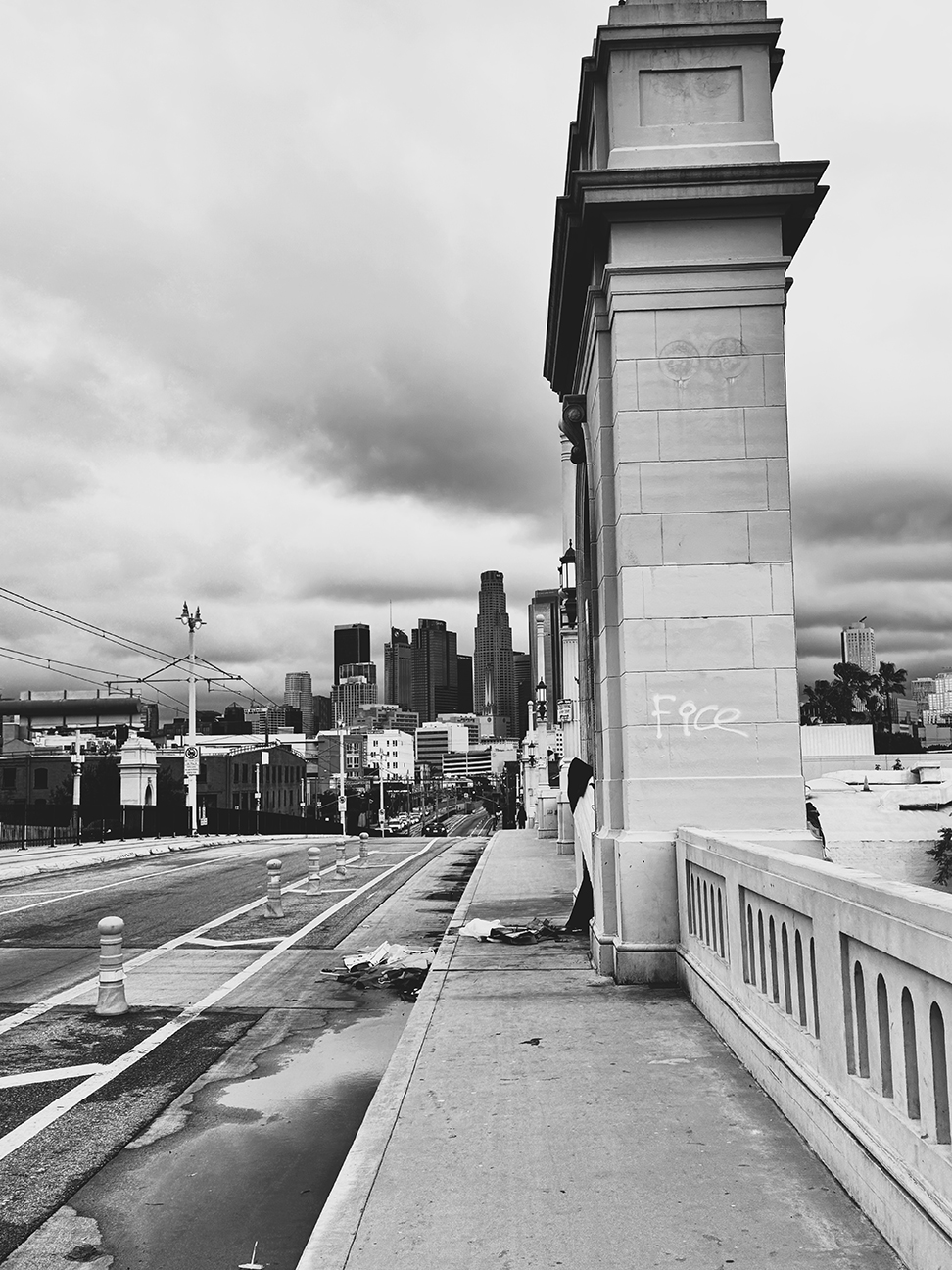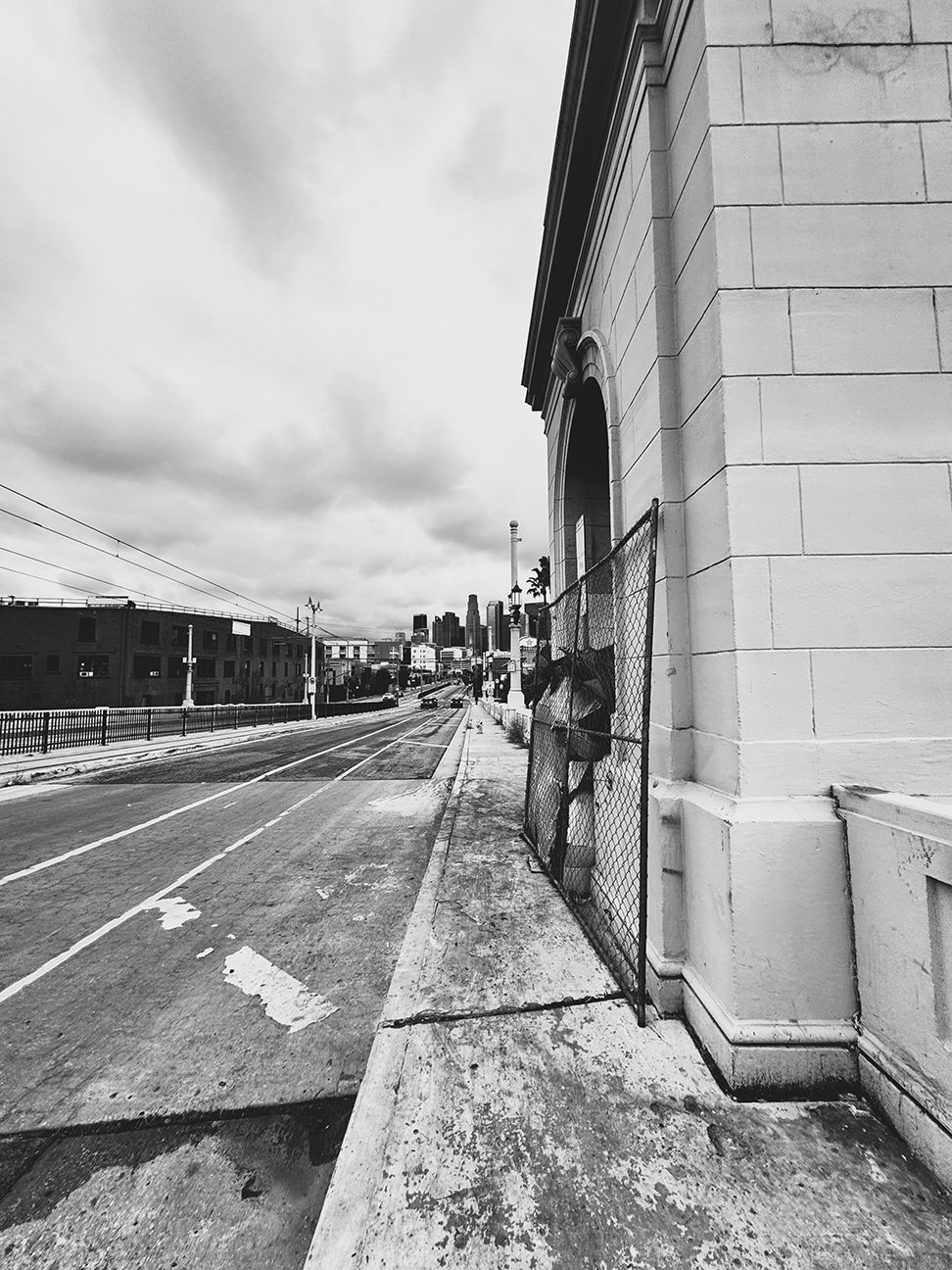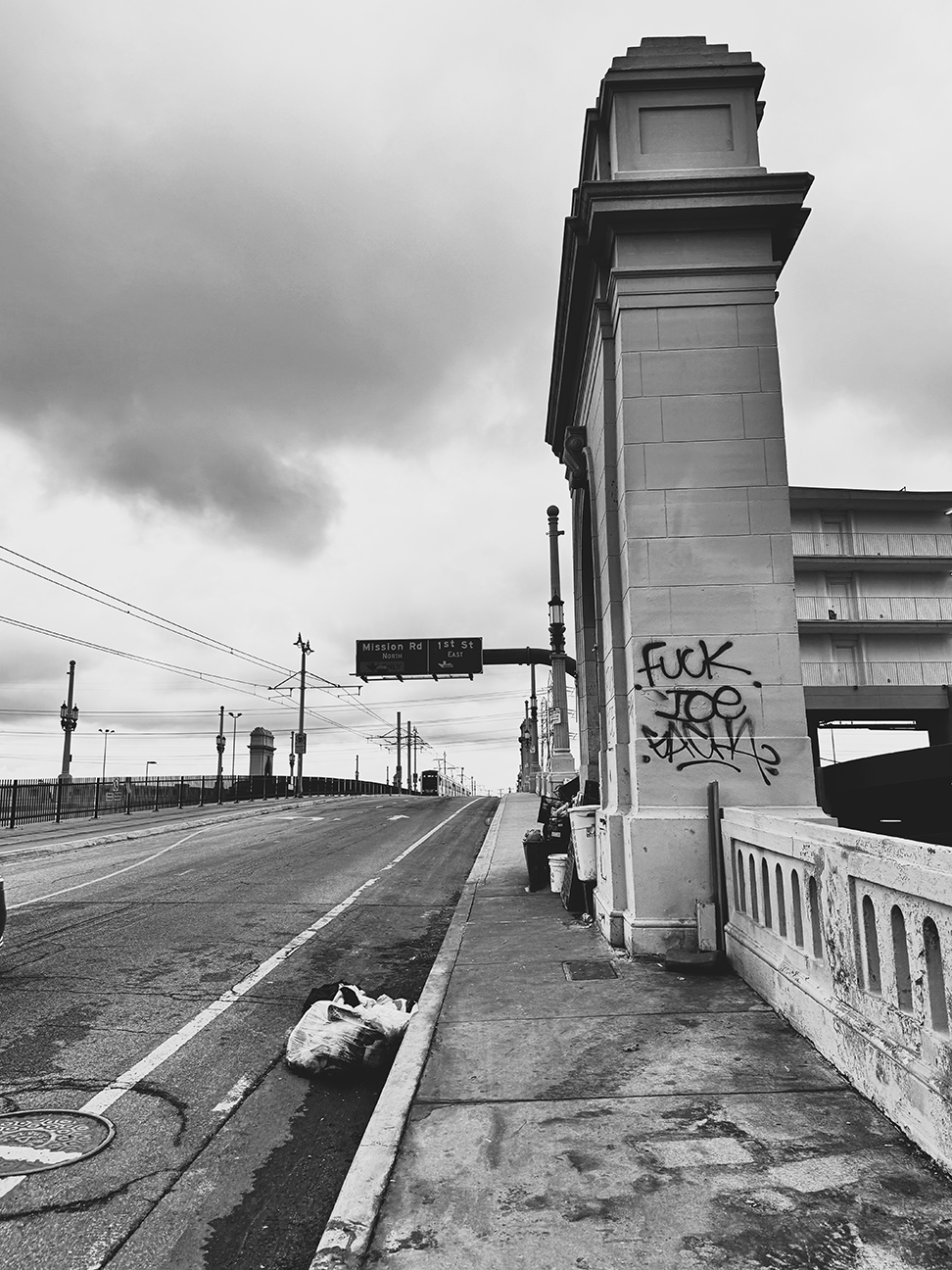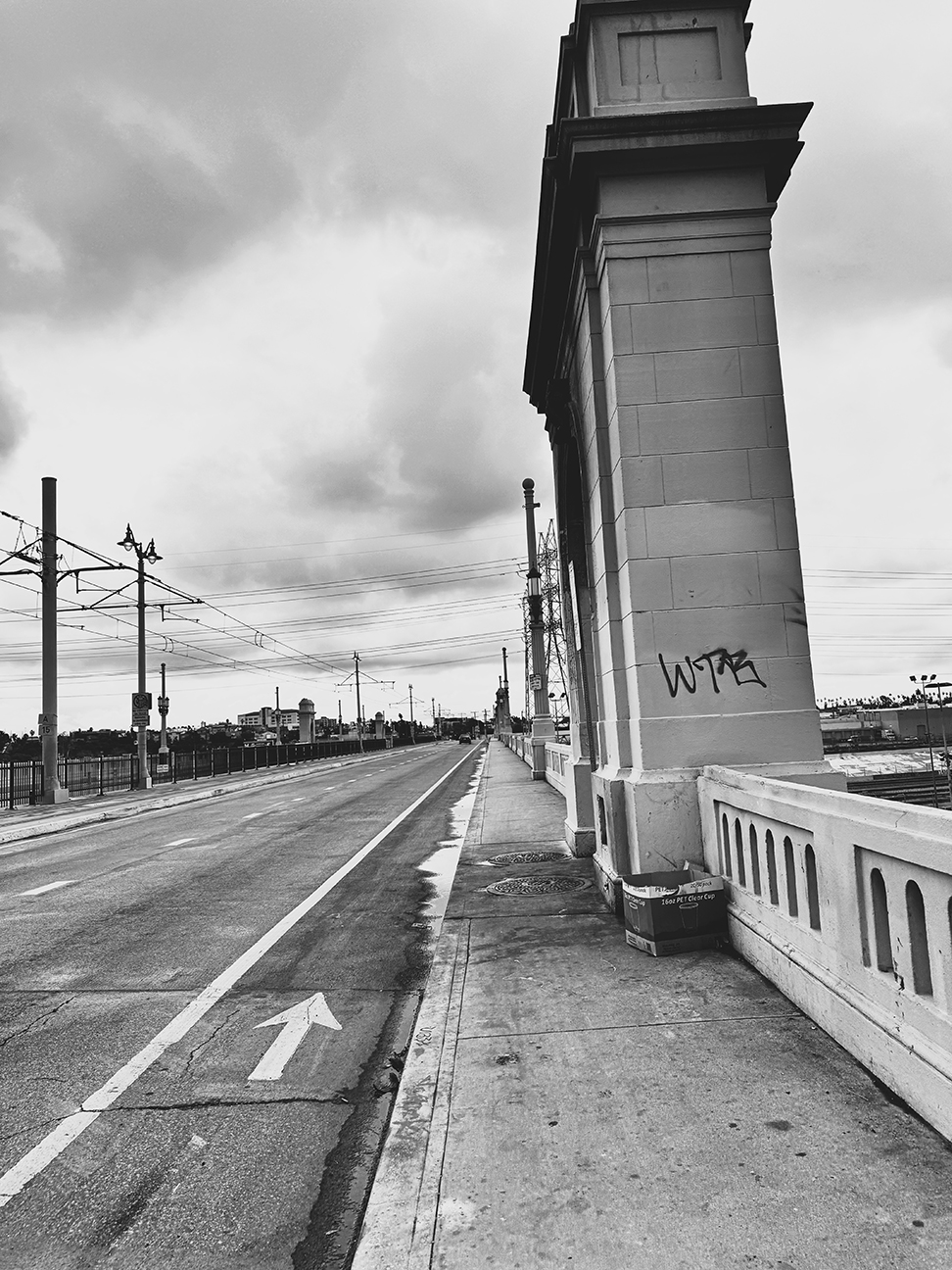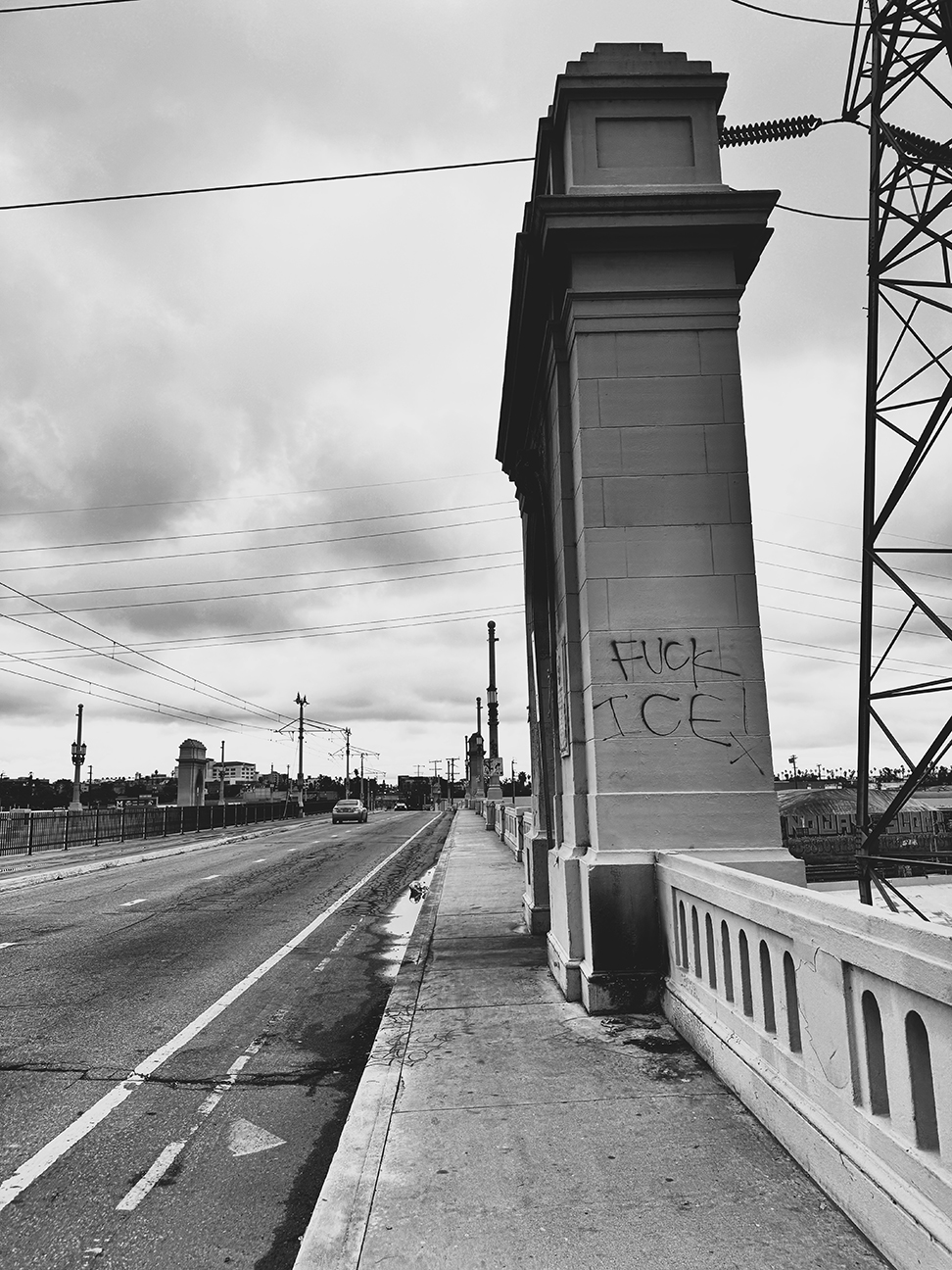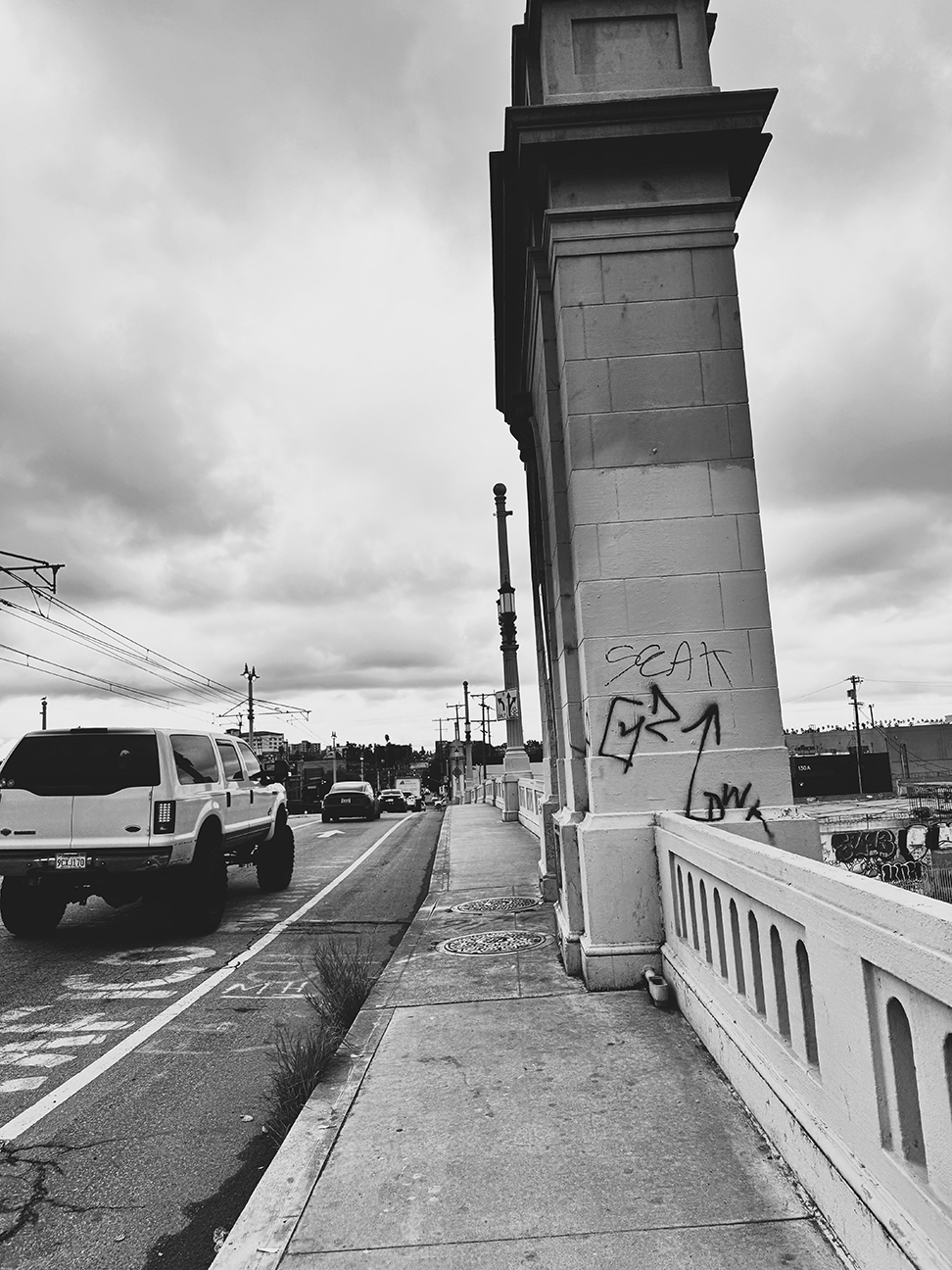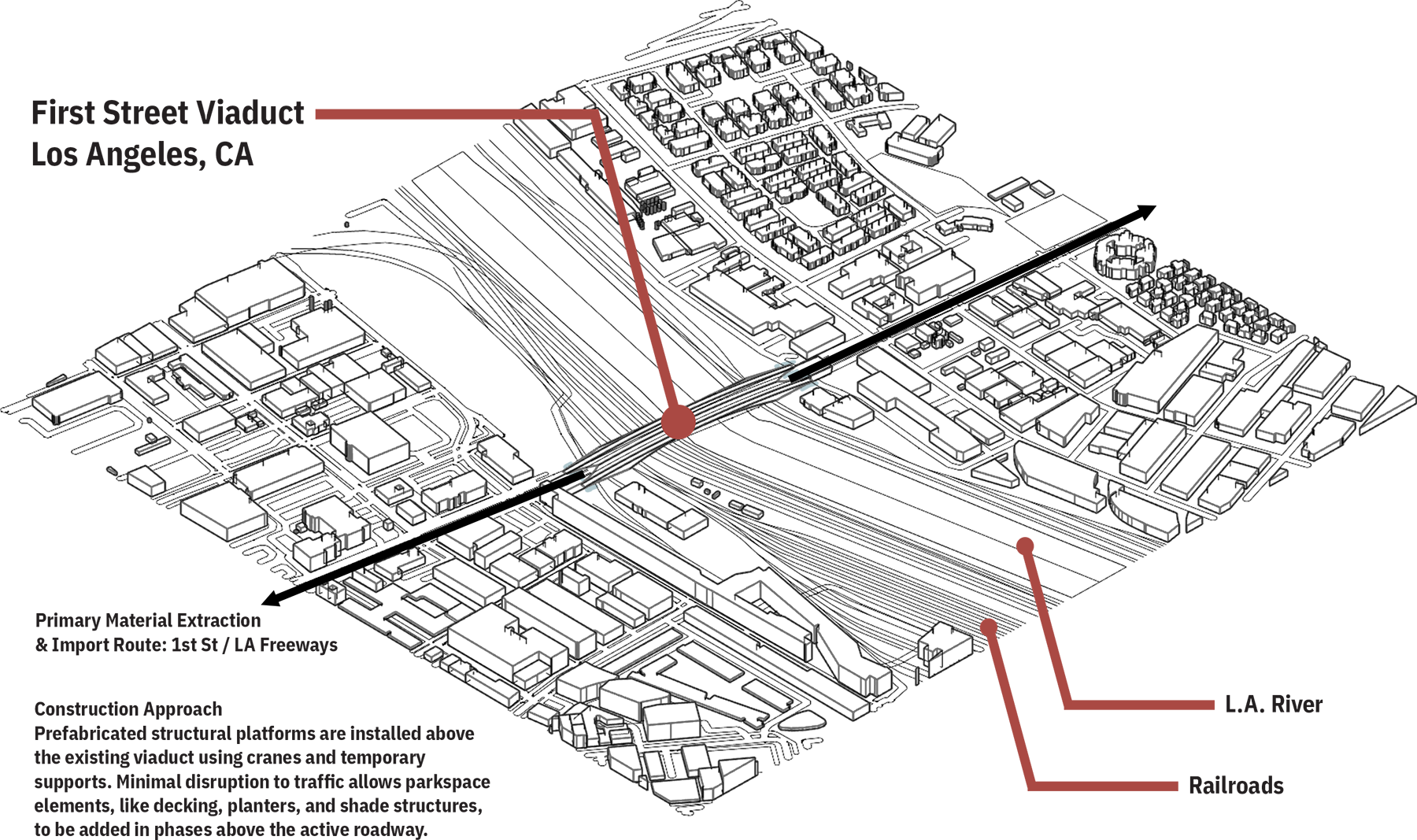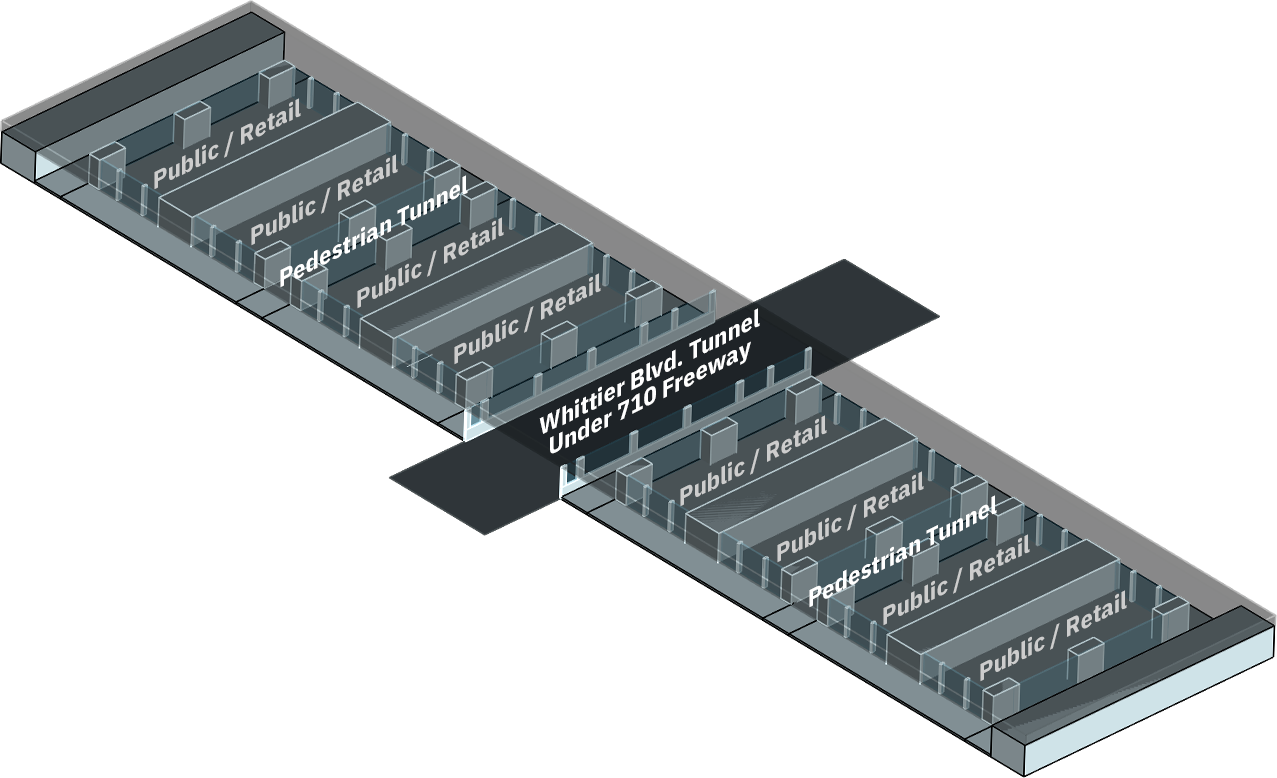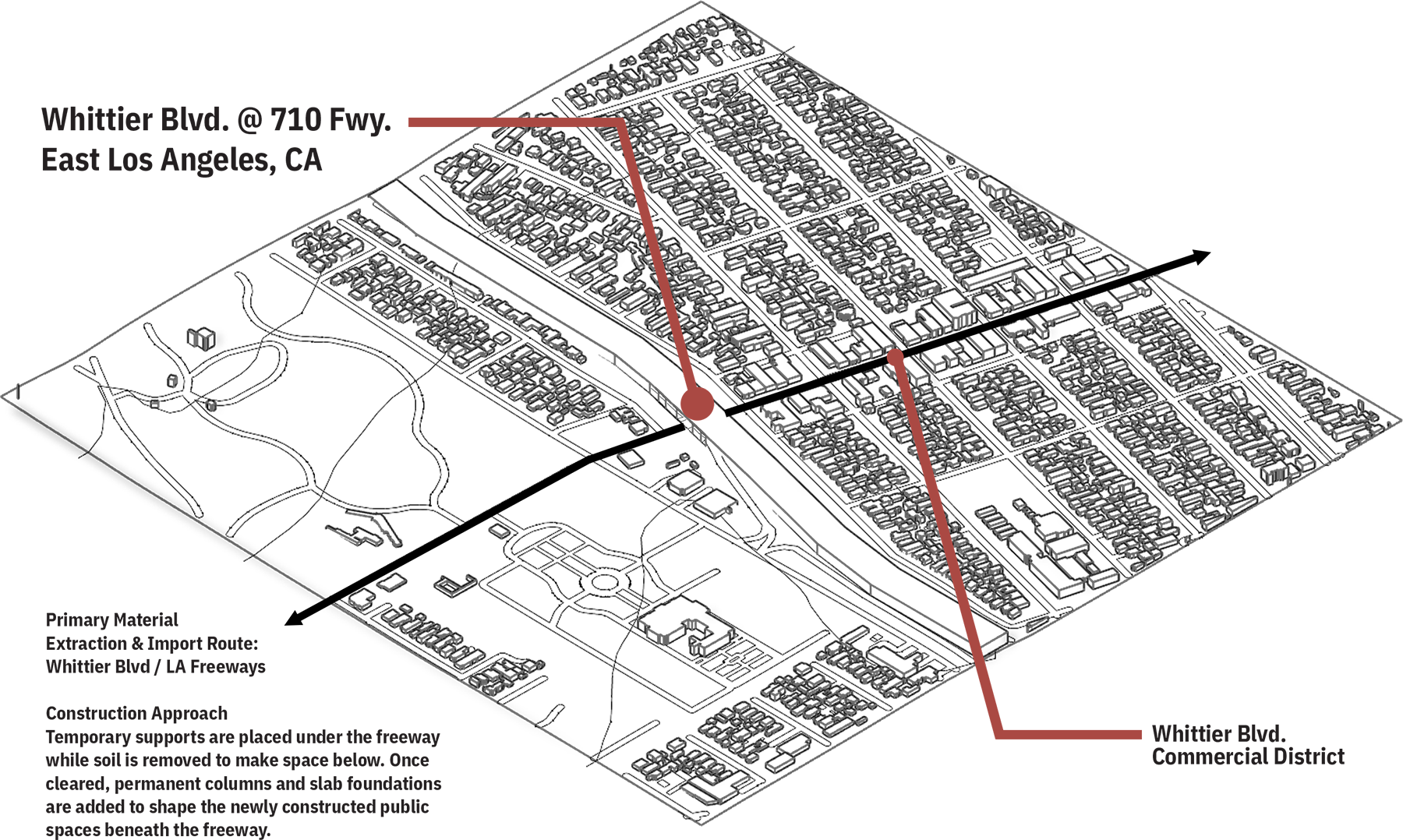Bridges & Viaducts
This project looks at how Los Angeles bridges have evolved from early river crossings to freeway viaducts and explores how they shape the city socially and spatially. Alongside historical research and site analysis, this project introduces conceptual designs that layer new public spaces above and beneath existing infrastructure, rethinking bridges as places to gather, pause, and connect.
Early 1900s
Bridges from this era often featured solid concrete railings or simple pipe designs. The focus was primarily on functionality, with minimal decorative elements. Example: The Buena Vista Viaduct (now the North Broadway Bridge) exemplifies early utilitarian design, emphasizing structural integrity over ornamentation.
1920s–1930s:
Art DecoThis period introduced more ornate railings, with geometric patterns, sunburst motifs, and stylized floral designs.Example: The Fourth Street Viaduct showcases railings with intricate geometric patterns, characteristic of the Art Deco era.
Post-WWII Era: Modernism and Minimalism
A shift towards simplicity emerged, with cleaner lines and less ornamentation. Railings became more streamlined, often utilizing materials like steel and aluminum. Example: The Vincent Thomas Bridge features minimalist railings that align with mid-20th-century modernist principles.
The Early Days
L.A. County saw its first major surge of bridges and viaducts in the early 1900s, driven by rapid urban growth. On the east side of the city, many bridges were built to cross the L.A. River and its floodplains as the city expanded. One of these bridges was the original 6th Street Viaduct, connecting downtown Los Angeles and Boyle Heights. This landmark opened to the public in 1932 and became an icon of the city [1
The Role of the L.A. River in Design
The L.A. River posed a significant challenge to urban development, and many bridges were specifically designed to cross its floodplain and channels. Major viaducts like the 6th Street Viaduct and 7th Street Bridge were constructed to allow for uninterrupted connectivity across the city [2].
The Design
Many early bridges (1920s–1930s) featured Art Deco and Beaux-Arts influences, incorporating decorative railings, ornate lampposts, and intricate motifs. These styles reflected the era’s focus on blending functionality with aesthetic appeal, and these bridges continue to inspire those who cross them [3].
The Designer
Merrill Butler (1891–1963) was a visionary engineer whose work helped define the infrastructure of early 20th-century Los Angeles. Responsible for designing some of the city’s most iconic bridges, including the 6th Street Viaduct, Butler’s contributions were vital in connecting a rapidly expanding city and shaping its modern landscape [4].
A Closer Look at Bridge Design & Architectural Ornamentation in Los Angeles
Los Angeles boasts a rich tapestry of bridge designs, reflecting various architectural movements and engineering advancements. The city’s bridges not only serve functional purposes but also stand as artistic landmarks, showcasing intricate railings and ornamentation that narrate the region’s history.
Design & Priority Changes After WWII
After World War II, there was a significant shift in bridge design, influenced by the demands of suburban expansion and advancements in materials and engineering. Post-war bridges prioritized cost-efficiency and functionality over ornate design. The focus was on creating reliable, durable structures to accommodate the rapidly growing car-centric population [5].
The Influence of Seismic Activity
After the San Fernando earthquake in 1971, new design standards and retrofitting technologies such as base isolation and seismic damping were incorporated into bridge design. Another major earthquake that severely impacted L.A.’s bridge and viaduct infrastructure was the 1994 Northridge Earthquake, which caused elevated sections of the 10 Freeway to collapse [6].
Modern Bridges & Sustainability
With modern infrastructure projects, sustainability has become a key concern. Bridges are now being designed to incorporate green spaces, bike paths, and pedestrian walkways to promote alternative transport and reduce carbon footprints. The L.A. River Revitalization Master Plan envisions bridges as part of a strategy to restore the river’s ecosystem and create public spaces [7].
The Legacy & Impact of L.A. Bridges
Los Angeles’ bridges and viaducts are more than just infrastructure; they are testaments to the city’s growth, resilience, and creativity. From their role in connecting neighborhoods to becoming cultural icons in films, these structures represent the spirit of innovation that shaped L.A. Their designs continue to evolve, balancing history, sustainability, and functionality, ensuring they remain vital to the city’s future.
Beyond their utility, bridges in L.A. carry deep symbolic weight. They span physical and social divides — linking communities once separated by rivers, railways, and expanding freeway systems. Over time, these crossings have shaped urban development patterns, influenced traffic circulation, and defined the identity of many neighborhoods.
The future of Los Angeles’ bridges depends on their ability to adapt. Through retrofitting, preservation, and upgrades, these structures must respond to seismic, environmental, and mobility needs. Their longevity will rely on public investment and thoughtful planning.
EXPERIMENT
Walk across the 1st Street Viaduct and measure the physical impact of the infrastructure on the human body.
Metric Used: Heart rate (BPM)
Measurements were taken at each arch on both sides of the bridge, walking from East L.A. toward Little Tokyo. Results varied depending on the elevation and incline of the bridge. The different spans between some arches also affected BPM, with some arches spaced further apart than others.
Observation:
Every arch along this bridge carries complete uniformity in its design and ornamentation, along with the railings on both sides. The only design element that differs is the modern fence separating the light rail lines.
Key Findings:
Elevation & Incline: Heart rate fluctuated in response to incline, with BPM increasing on steeper sections.
Arch Spacing & Impact: Wider arch spacing subtly affected walking rhythm and BPM.
Uniformity in Design: Despite elevation changes, ornamentation and railings remained consistent.
Singular Disruption: The modern fence disrupts the historic uniformity.
Bridges & Viaducts Proposals
The Overspan Layered Bridge
The Overspan is a layered bridge concept that introduces elevated park space above existing or newly built bridge infrastructure. It reclaims space traditionally reserved for vehicles and gives it back to the public as shaded, walkable park space. By reimagining the bridge as more than a placeless route of passage, The Overspan transforms it into a destination — a place to gather, pause, and connect above the flow of the city.
LAYERED ABOVE
Rather than replacing existing infrastructure, the Overspan introduces a new layer of use — one that reflects a shift in urban priorities. By layering park space above active bridges, it offers a quiet resistance to car-centric design and reframes infrastructure as a shared urban asset. This approach repositions bridges within the city’s social fabric, inviting new relationships between movement, public space, and everyday experience.
The ideal site for the Layered Bridge is among the multiple bridges that cross over the L.A. River near downtown. The approach can scale depending on bridge length, allowing easy application across the city.
How Would Layered Bridges Stand the Test of Time?
In 5 years: Bridges remain in peak condition with minimal wear. Green spaces are established but require upkeep.
In 15 years: Maintenance costs rise as materials age. Green infrastructure matures. Surrounding development pressures influence bridge use.
In 50 years: Major renovations required. Some bridges become cultural icons, others are demolished.
In 100 years: Only the most successful designs survive, gaining historic status or being adapted for future urban needs.
The Underspan Layered Bridge
The Underspan is a layered bridge concept that activates underutilized spaces beneath existing or newly built bridge infrastructure. These shaded zones are reimagined as civic and public spaces — places to pass through, pause, or gather beneath the city’s flow.
LAYERED BELOW
Rather than leaving the underside of infrastructure as neglected voids, the Underspan introduces a new layer of social use. By designing the space below as a usable threshold instead of an inaccessible boundary, the Underspan elevates bridges’ potential to create vertical urban continuity. This approach adapts spaces for public seating, lighting, informal economies, and vegetation.
The Underspan prioritizes reclaiming urban volume for community benefit rather than aesthetics alone.
How Would Underspan Bridges Stand the Test of Time?
In 5 years: Increased pedestrian use near transit and markets. Lighting, noise, and safety improvements needed.
In 15 years: Development pressures cause tension between activation and displacement. Some spaces formalize, others decline.
In 50 years: Select Underspans become permanent civic spaces; others are demolished.
In 100 years: Only those adapted to social, environmental, and economic changes remain.
Sources
- Sixth Street Viaduct (Wikipedia) “The Sixth Street Viaduct, also known as the Sixth Street Bridge, is a viaduct bridge that connects the Arts District in Downtown Los Angeles with the Boyle Heights neighborhood. The first incarnation, which opened in 1932 and demolished in 2016, was replaced with the second incarnation in 2022. [Source: https://en.wikipedia.org/wiki/Sixth_Street_Viaduct]
- Crossing the L.A. River (JSTOR) “The construction of monumental bridges over the Los Angeles River was essential to the city’s plan for cohesive urban expansion, ensuring uninterrupted movement across the river’s broad floodplain.” [Source: https://www.jstor.org/stable/41171240]
- A Brief History of Bridges in Los Angeles County (PBS SoCal) “In early Los Angeles, bridges loomed large in the public mind—even if their structural scale tended toward the modest.”” [Source: https://www.pbssocal.org/shows/lost-la/a-brief-history-of-bridges-in-los-angeles-county]
- Historic Bridges: Merrill Butler (The LA River) “He served as the city of Los Angeles’ engineer for bridges and structures (later called engineer of design) from 1923 to 1961.” [Source: https://thelariver.com/guide/sightseeing/historic-bridges/merrill-butler/]
- The Commission that Shaped the Los Angeles River’s Bridges (PBS SoCal) “These bridges were an outgrowth of the City Beautiful movement, a philosophy of urban planning that swept through the country from the 1890s to the 1920s.” [Source: https://www.pbssocal.org/shows/earth-focus/the-commission-that-shaped-the-los-angeles-rivers-bridges]
- The 1994 earthquake broke the 10 Freeway. How L.A. rebuilt it in record time (Los Angeles Times) “The stretch of the 10 Freeway that collapsed following the Jan. 17, 1994, Northridge earthquake was repaired in less than three months.” [Source: https://www.latimes.com/california/story/2023-11-13/the-1994-earthquake-smashed-the-10-freeway-how-l-a-rebuilt-it-in-record-time]
- Sixth Street Viaduct Seismic Improvement Project (Institute for Sustainable Infrastructure) “The Sixth Street Viaduct project has been designed to withstand at a minimum a seismic event expected to occur once every 1000-years.” [Source: https://sustainableinfrastructure.org/project-awards/sixth-street-viaduct-seismic-improvement-project]



